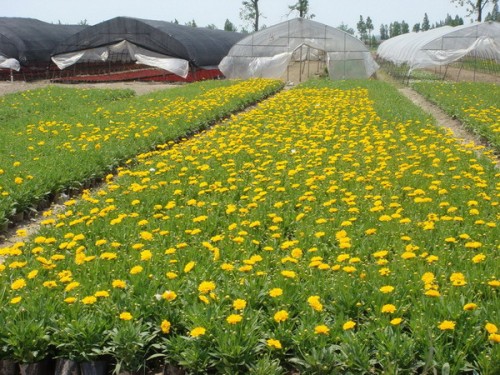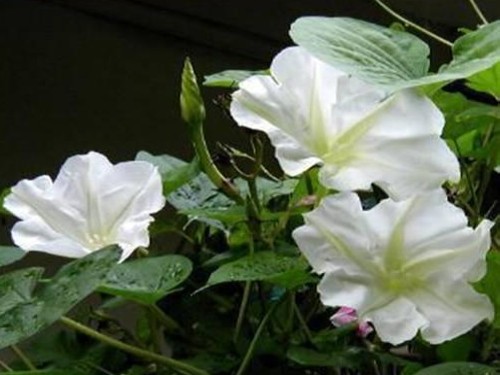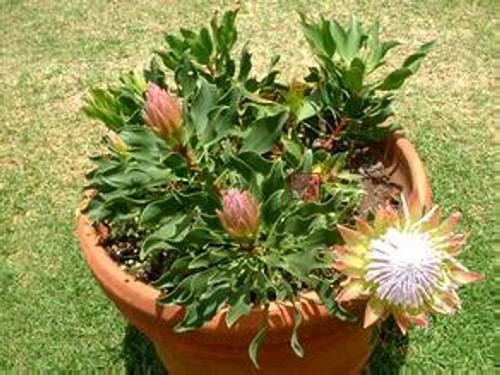Planting techniques of Chrysanthemum morifolium
The planting of Chrysanthemum morifolium has a good protective effect on the environment, which can not only reduce soil and water loss, but also improve the coverage of green space, but also purify the local air and improve the quality of people's living environment. It is of great benefit to the protection of the environment and the maintenance of ecological balance. It is an important material for beautifying the environment and has high ornamental value.

It is generally sown in spring and can blossom 4 months after sowing. Planting in the open field often propagates by itself. In addition, ramet multiplication can also be carried out in autumn. Choose the more exuberant plants, dig up and cut the persistent roots with a sharp blade, cut off the withered and yellow leaves, and plant them separately. Cultivation and management is relatively simple, requiring proper fertilizer and water, otherwise it is easy to affect the blooming of pregnant buds, so fertilization should be stopped at flowering stage to prevent branches and leaves from growing too much. After flowering, the pedicel should be cut off in time to facilitate the germination of new seedlings at the base, and the general plants should be renewed after 5-6 years of planting.
[Chrysanthemum morifolium seedlings]
The direct broadcast of Golden Chrysanthemum should be sown in autumn or spring. The optimum humidity for seed germination is about 21 ℃, but sowing too early or too late will make the seedlings too big or too small, reduce the cold resistance, easy to freeze to death, and can not safely move into the cold bed to survive the winter. Sowing soil cover is about 2 times that of seeds, and seedlings emerge in about 10-12 days; seedlings are generally carried out in March-May, and the requirements for bed soil are not strict, but the loose bed with medium fertility is the most suitable. The seeding amount is about 2 grams per square meter, in order to sow evenly, sow seeds after evenly mixing fine sand before sowing, cover soil about 0.5cm, control ground temperature 18-21 ℃, seedling emergence quickly and neatly.
After emergence, the seedlings were transferred to the container in time to cultivate seedlings. 6-8 true leaves were planted with earthen soil. In the warm areas of the north, the seedlings can survive the winter in the open field, while in the cold areas, the seedlings can not survive the winter in the open field, so they need to be raised and transplanted in spring. It can be directly seeded when the seeds are sufficient, and there is no need to raise seedlings and transplant. Beijing can sow seeds in late September. It is planned to sow seeds from March to April when flowers bloom from May to June in cold areas, June when flowers bloom from August to September, and from March to April when autumn sowing in warm areas. Cold-resistant, avoid hot, like sufficient sunshine, dry air, avoid bed soil is too wet.
[lighting and ventilation]
The main results are as follows: 1. Lighting: Chrysanthemum morifolium is fond of strong direct light, and it is easy to grow after shade. It is a short-day plant with short-day conditions to ensure the quality of cut flowers, and sodium lamp is used to supplement light to delay flower bud differentiation in out-of-season cultivation (about 40 days of electric light, 70-80 days after stopping 40~50cm of plant height).
2. Ventilation: ventilation, making full use of carbon dioxide.
[fertilizer and water management]
1. Water: Chrysanthemum morifolium is watered once after planting, and watering is controlled later, otherwise it is easy to grow.
2. Fertilizer: rotten leaves were used as base fertilizer (1Kg/m2) before planting; fertilizer was stopped in the transition from vegetative growth to reproductive growth; topdressing after bud growth.
[ploughing and pruning]
1. Middle ploughing: after planting, the seedlings of Chrysanthemum morifolium should loosen the soil before the new branches grow, loosen the soil to facilitate breathing after rain, and weed once a week in the rainy season.
2. Pruning: the plant height of Chrysanthemum morifolium was picked once by 6cm, and the second heart was picked when branching 10cm, and the willow buds were removed in time.
[pest control]
1. Diseases: powdery mildew and black spot, which are caused by rain and miscellaneous bacteria in the soil. Chlorothalonil and topiramate are used alternately every 10 days.
2. Insect pests: aphids, ground tigers, grubs, omethoate and permethrin are used alternately and once every 10 days.
Time: 2019-05-25 Click:
- Prev

Moonlight flower planting method
The main results are as follows: 1. Select Pingchuan with good drainage and fertile soil, low-lying land and hilly land with irrigation conditions. Avoid watermelons and other melons, welcome stubble. Soil preparation: top pulp and ridge, timely suppression and preservation of soil moisture. The transplanted ridge is a long-mouth ridge. The width of the ridge is 9~13cm, and 7 to 8 empty ridges in the middle should also be planted to control weeds.
- Next

Planting techniques of Imperial Flower
The emperor flower is huge, the flower shape is strange, magnificent and colorful, noble and elegant, has a strong ornamental value and medicine and food value. Different climatic conditions and geographical conditions have led to great changes in the leaves, patterns, colors and flowering time of imperial flowers and trees, even under the same planting conditions.
Related
- Fuxing push coffee new agricultural production and marketing class: lack of small-scale processing plants
- Jujube rice field leisure farm deep ploughing Yilan for five years to create a space for organic food and play
- Nongyu Farm-A trial of organic papaya for brave women with advanced technology
- Four points for attention in the prevention and control of diseases and insect pests of edible fungi
- How to add nutrient solution to Edible Fungi
- Is there any good way to control edible fungus mites?
- Open Inoculation Technology of Edible Fungi
- Is there any clever way to use fertilizer for edible fungus in winter?
- What agents are used to kill the pathogens of edible fungi in the mushroom shed?
- Rapid drying of Edible Fungi

